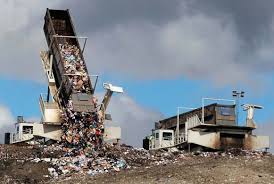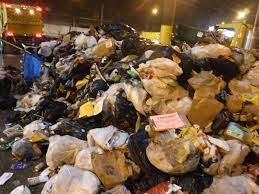Waste characterization is a method used to determine the types of materials being discarded in a waste stream and in what proportion. Waste characterization information can help policy makers and city planners reduce landfill waste, set up recycling programs, and conserve money and resources. In fact, a waste characterisation study typically precedes waste diversion studies and strategies.
Rationale of Waste Characterisation
Characterisation studies allow cities to map their entire waste stream and to identify gaps so that they can focus their efforts on diverting the most appropriate materials that will have the greatest impact.
Depending on local conditions, material types selected for study can be based on volume generated difficulty of collection and processing, or recyclability and reuse potential. Each city will have to determine for themselves which material types and selection criteria make the most sense, but having this information will make the process easier and improve diversion efforts.
To conduct a characterisation study, data must be collected by taking representative samples of waste and sorting it into material types like newspaper and aluminum cans, and weighing each type.
Read Also : Waste Sampling Equipment and Waste Sampling Procedures
Samples can be taken from trucks delivering waste to landfills and transfer stations from residential, commercial, and self-haul sources. The following are the major steps to complete a waste characterisation study:
Select Approach: Landfill sampling, waste generator sampling, use of existing data, combination of approaches
Collect Representative Data: select samples for field studies, determine number of samples needed
Use Protocols: uniform field sorting protocols, material type definitions, lumping material categories, classifying composites
Health and Safety: determine safety protocol before conducting field studies
Data Analysis: random sampling (landfill) vs. subdivision of sectors (generator).
Why Waste Analysis?
Waste products must be used or disposed of with environmentally sound management practices in order to prevent damage to our natural resources. Farms’ food-processing plants, textile manufacturers, pharmaceutical companies, wood and paper producers, and municipalities all generate a variety of waste products the disposal of which must be managed somewhat differently depending upon the source and the intended use.
Waste managers therefore require sound knowledge of waste constituents before choosing and applying appropriate management procedure. Waste analysis also helps toxicologists to determine the individual constituents of waste and the potential toxic effects of the waste to both the environment and humans.
Planning Waste Analysis
The planning of waste analysis program or activity will take into account the following
Type of sampling
Number and type of stratum
Level of sampling
Type of sampling unit
Calculation of sample size
Generation of random sample plan, and
Duration of waste analysis
Execution of Waste Analysis
In conclusion, the fieldwork associated with the collection and transport of samples will account for a substantial proportion of the total cost of a monitoring programme.

Sampling expeditions should, therefore, be planned and carried out in such a way that efforts are not wasted. If, for example, an essential piece of equipment is forgotten or an inadequately described sampling station cannot be found, the value of that particular sampling expedition is seriously compromised.
Read Also : Checklist for Waste Sampling
Similarly, if unrealistic estimates of travel time are made and an expedition takes longer than intended, samples may be held longer than the maximum allowable storage time and the results of analyses will be of questionable value.
It is advisable to carry out a pilot programme before the routine monitoring programme begins. This can be used as a training exercise for new personnel and will provide the opportunity to make a final selection of sampling stations on the basis of whether they are representative of the whole site as well as readily accessible.
Programme managers and laboratory personnel should accompany field personnel on field expeditions from time to time. This provides opportunities for field supervision as part of in-service training and for everyone working on the programme to appreciate the problems and needs of the field work.

